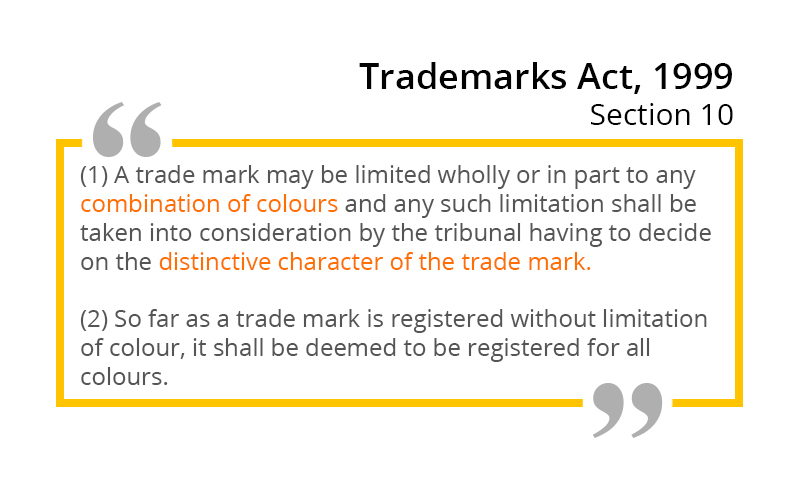Can you Trademark a Colour?
July 06, 2018 by Akshara Bala
Be it a single colour or a combination of colours; the trademark should be distinctive and be capable of distinguishing the brand’s goods and services from similar products and services. Usually, such trademark applications are filed with significant evidence by the applicant to show that the colours or combinations of colours are exclusive and solely associated with the brand’s identity.
From the marketing perspective, colours form a very distinctive part of a brand’s identity. There are several brands that are solely recognisable by their colours. Example: vivid yellow and red of McDonald’s, Pepsi’s iconic blue and Vodafone’s distinctive Red. Such colour schemes can potentially be protected as a registered mark.
Colour Marks in India
In India, non-traditional trademark registration is still in its infancy, and there aren’t many legal precedents of colour trademarks registered in India. Nonetheless, the position of the law is very clear when it comes to colour marks. Section 10 of Trademarks Act, 1999, clearly states that colour or a combination of colours can be registered as a trademark.

Single Colour Trademarks in India
There have not been many examples of single colour marks. Cadbury enjoys right over its distinctive purple packaging of chocolate bars in several countries around the world, but a legal battle is still underway for securing the iconic purple colour in India. This is because the Indian registry and Courts think that registering a single colour would lead to colour depletion and exhaustion of colours – creating a colour monopoly. Further, they feel that a single colour lacks distinctiveness. Apart from Cadbury, several over brands, like Vanish (pink packaging) and Christian Louboutin (Lacquer Red soled shoes), who enjoy colour rights outside India, are fighting for rights within the country as well.
Related: Can you Trademark a Hashtag(#)?
Colour Combination Trademark India
Combinations of colours are much easier to get registered in the country. For instance, Colgate enjoys the rights over its red and white colour scheme. Colours can be protected based on the good and services of the brand that they represent. Going back to the above example, while Colgate has the rights over the red and white combination, the brand cannot stop Coca-cola or Airtel from using the same combination because their goods and services belong to a completely unrelated industry. However, if you see another dental care brand with the same combination of colours, they would indeed be infringing.